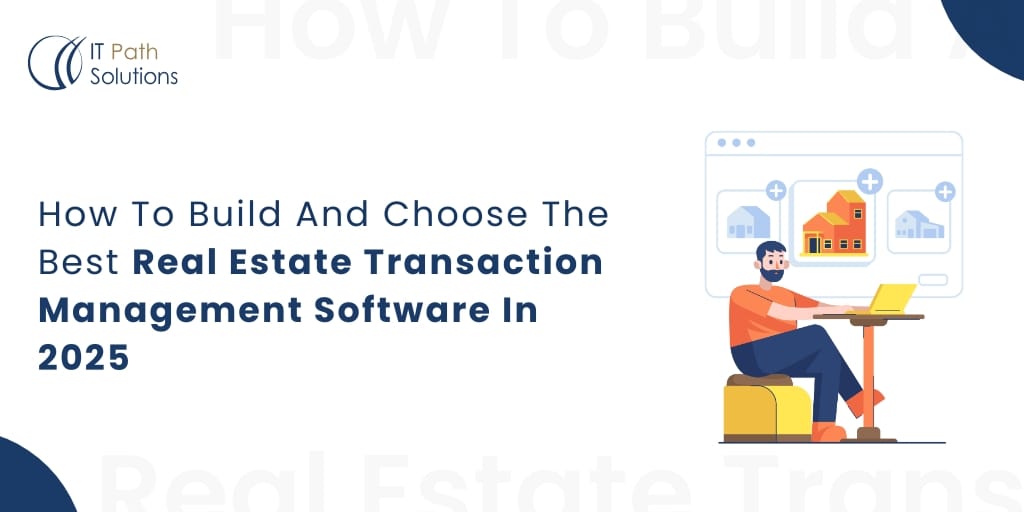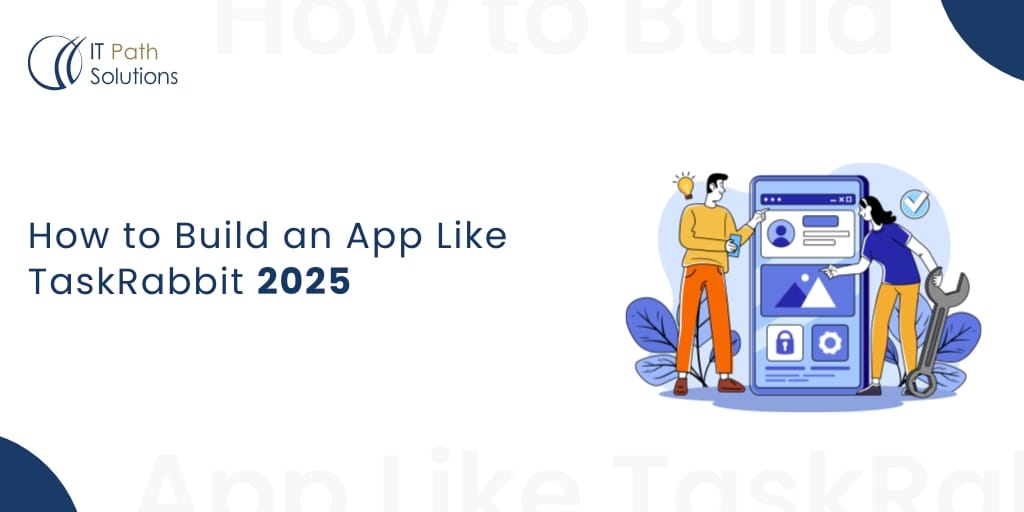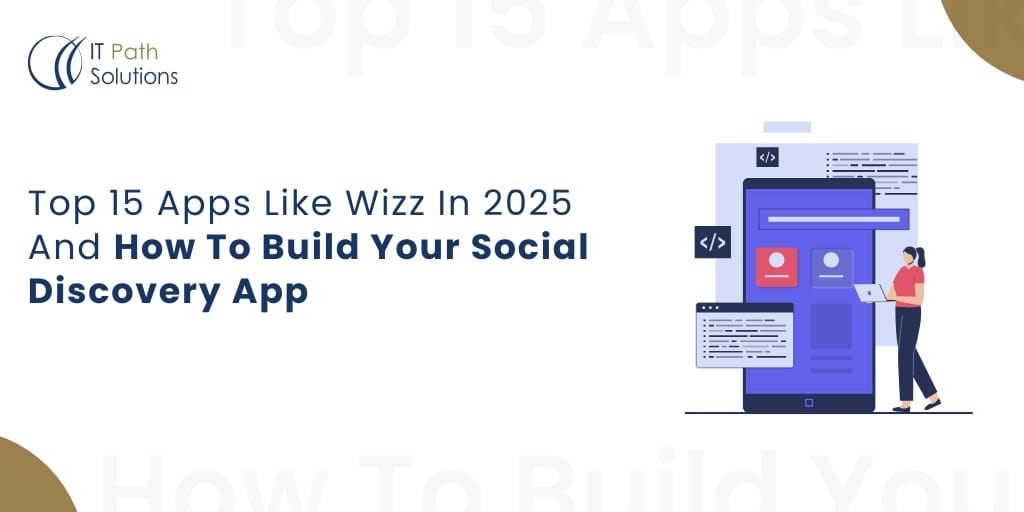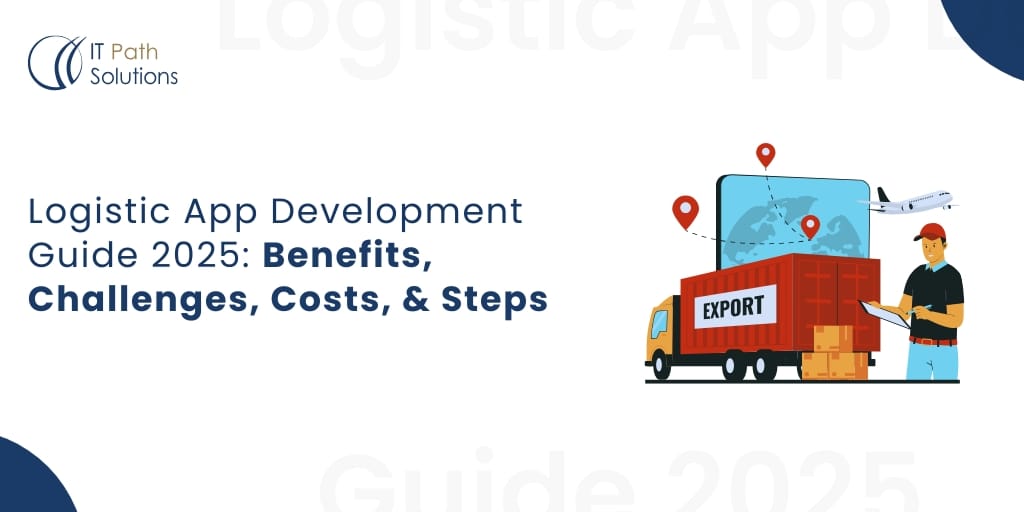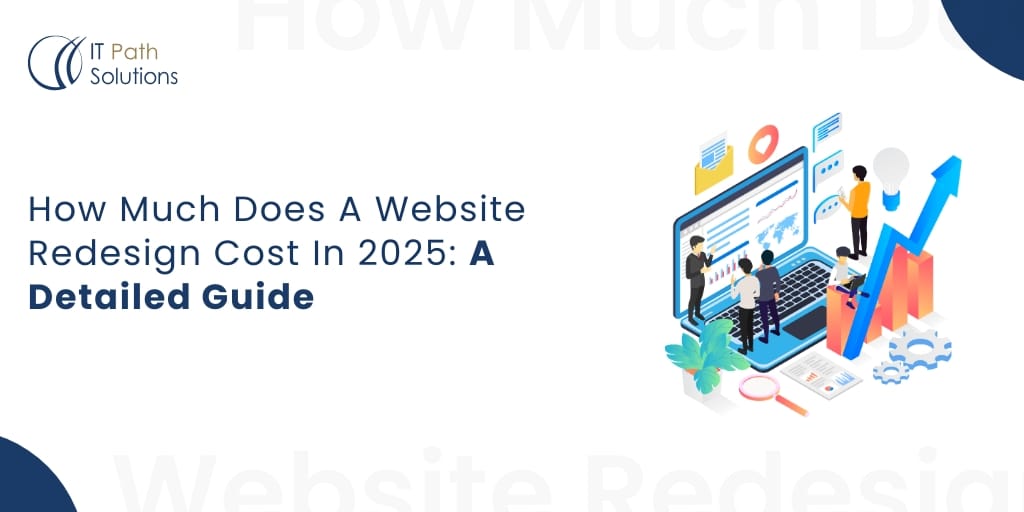How To Build An On-Demand Food Delivery App: Cost, Features, & Tech Stack

Did you know the global on-demand food delivery market is projected to surpass USD 500 billion by the end of 2030? It is estimated to grow at a compound annual growth rate (CAGR) of nearly 9.4% from 2025 to 2030. These staggering figures reflect the rapid evolution of how we order and consume food.
However, many food delivery ventures still fail despite this astonishing growth. The root cause is often not the shortage of demand; it is the lack of preparation, strategy, and understanding of what it really takes to build a successful food delivery app from the ground up.
If you’re an entrepreneur, restaurant chain owner, or startup founder dreaming of creating the next big on-demand food delivery platform, this guide is for you.
This is not just another how-to article. It goes beyond the technical side of development. This guide is your strategic roadmap to confidently make critical decisions, avoid common pitfalls, and partner with the right experts.
Whether you want to replicate the success of Uber Eats or carve a niche in the grocery or cloud kitchen segment, the insights shared here are curated to help you win in 2025 and beyond.
Let us begin your journey toward building a savvy, future-ready white label food delivery app solutions that delivers more than just meals.
Why 2025 Is the Perfect Year To Build A White Label Food Delivery App Solutions
The online food delivery industry is driven by evolving consumer behavior and digital-first dining habits. From quick-service restaurants to cloud kitchens, food businesses are actively adopting technology to stay competitive and expand customer reach.
What was once a convenience has now become a default expectation.
Here’s why 2025 stands out:
- Consumer behavior is digital-first. More users prefer ordering online than dining in, especially in urban regions.
- AI and 5G adoption are accelerating. It enables clever routing, real-time updates, and predictive personalization.
- Regulatory support is increasing. Governments are now supporting digital innovation in the food and retail sectors.
- Investment in cloud kitchens is booming. Entrepreneurs are tapping into delivery-only models that need robust digital platforms.
Whether you run a restaurant or want to launch a tech startup, users in 2025 are seeking more than just convenience. They want speed, transparency, and trust in every interaction.
By launching now, you benefit from mature technologies, competent talent, and growing demand across demographics.
What You Should Know: 2025 is not just a good year to start a white-label food delivery app. It is a strategic window where technology, consumer expectations, and business readiness align perfectly.
Types Of Food Delivery App Models You Can Build In 2025

Before you develop your app, you need to decide what kind of food delivery model best fits your business idea or existing operation. In 2025, the food delivery space is more diverse than ever, offering personalized models for different needs and goals.
Here are the top app models dominating the industry:
Single Restaurant App
It is ideal for individual restaurants that want direct orders without third-party interference. It offers complete control over branding, pricing, and customer data.
Multi-Restaurant Marketplace
It works like a digital food court. Users browse multiple restaurants within one app. It is a scalable model suitable for startups and aggregators.
Aggregator Platform
It is similar to multi-restaurant models but often integrates third-party logistics. Revenue is driven by commissions, delivery charges, and premium placements.
Cloud Kitchen Model
It is perfect for delivery-only food brands. These apps focus on efficiency and swift delivery without a physical dine-in setup.
Grocery Delivery And Essentials App
It combines food ordering with grocery delivery. It is highly popular in suburban and tier-2 cities, especially when integrated with local vendors.
Smart Summary: Each model comes with its own features, cost implications, and market potential. Select one based on your target audience, operational strengths, and long-term growth strategy.
Key Features That Define A High-Performing On-Demand Food Delivery App Development
Success in the food delivery business begins with building a seamless digital experience for every user involved, be it customers, delivery agents, restaurants, or admins. In 2025, high-performing apps go beyond basic ordering and tracking to deliver real-time convenience and intelligent functionality.
Here are the must-have feature sets for each user panel:
Customer App Features

- Easy signup and login
- Real-time order tracking with GPS
- Smart search and restaurant filters
- Multiple payment options with wallet integration
- Ratings, reviews, and loyalty rewards
Delivery Partner App Features

- Route optimization using live maps
- Delivery history and earnings dashboard
- In-app chat and order status updates
- Availability toggles and push notifications
Restaurant Dashboard (Custom Restaurant Delivery App Features)

- Order management system
- Menu and pricing updates
- Customer insights and analytics
- Inventory sync and delivery coordination
Admin Panel
- Multi-level access control
- Revenue tracking and commission management
- Vendor onboarding and user management
- Customer support tools and dispute resolution
Knowledge Drop: A powerful multi-restaurant food delivery app is an ecosystem, not just a consumer-facing interface. Prioritize clarity, real-time data access, and operational smoothness to deliver an experience that keeps all users engaged and loyal.
Develop a Food Delivery App with Advanced AI Features

In 2025, technology is the secret ingredient behind fast, intelligent, and secure food delivery apps. Modern platforms leverage cutting-edge features that go beyond the basics to enhance personalization, automation, and efficiency.
Here are some pivotal technologies shaping next-gen food delivery apps:
Artificial Intelligence (AI)
- Personalized food recommendations based on order history
- Dynamic pricing and menu suggestions
- Predictive ordering patterns for frequent users
Internet of Things (IoT)
- Savvy kitchen integrations for real-time order status
- Temperature monitoring for delivery boxes
- Automated stock alerts for restaurants
Voice Search & Assistant Integration
- Users can place or repeat orders using voice commands
- Seamless interaction with connected home devices
Route Optimization Algorithms
- Shorter delivery times using AI-based traffic analysis
- Efficient batch delivery assignments
Contactless Technology
- QR code-based delivery confirmations
- Tip and rating prompts without physical interaction
Quick Recap: Advanced tech elevates your app from just functional to truly futuristic. Whether it is AI-powered personalization or IoT-based efficiency, investing in high-tech innovations can give your food delivery platform a massive competitive edge.
Choosing The Right Tech Stack For On-Demand Food Delivery App Development
Behind every successful food delivery app is a solid tech stack. Your choice of technology affects performance, scalability, and future maintenance. In 2025, going with a modern, well-integrated stack is paramount.
Here is what a high-performing food delivery tech stack includes:
Frontend (Customer-Facing Interface)
- React Native or Flutter for cross-platform app development
- Swift for iOS and Kotlin for Android (if going native)
Backend (Logic and Data Handling)
- Node.js or Python (Django) for scalable and fast performance
- PHP (Laravel) if you prefer structured MVC frameworks
Database
- MongoDB or PostgreSQL for handling complex user and order data
- Redis for caching and speeding up user sessions
APIs And Integrations
- Payment gateways like Stripe or Razorpay
- SMS and email providers like Twilio or SendGrid
- GPS and real-time maps via Google Maps API
Cloud Hosting And DevOps
- AWS, Google Cloud, or Azure for hosting
- Docker and Kubernetes for seamless deployment
What This Means For You: Selecting the most suitable stack sets the tone for your app’s speed, flexibility, and future updates. Match your tech stack with your business scale, team expertise, and feature complexity.
Cost To Develop A Food Delivery App In 2025
The cost to build a on-demand custom food delivery app in 2025 depends on several vital variables, including feature complexity, technology stack, team structure, and geographical location. Whether you’re building a simple single and multi-restaurant app or a full-scale multi-vendor platform, pricing will differ significantly.
Cost Breakdown
| App Type | Estimated Cost | Ideal For | Includes |
| Basic (Single Restaurant) | $10,000 to $25,000 | Local cafes, single outlets | Basic ordering, menu, user login, simple UI, manual delivery assignment |
| Mid-Level (Multi-Restaurant) | $30,000 to $70,000 | Multi-outlet brands, startups | Admin panel, GPS tracking, online payment, basic loyalty system |
| Advanced (Aggregator or Cloud Kitchen) | $80,000 to $150,000+ | Enterprises, Uber Eats-style apps | AI features, real-time tracking, analytics, loyalty, push notifications |
Regional Hourly Development Rates In 2025
| Region | Hourly Rate (USD) | Typical Use Case |
| USA & Canada | $70 to $150 | Enterprise-grade development |
| Western Europe | $50 to $120 | Mid to high-end solutions |
| Eastern Europe | $30 to $60 | Budget-friendly and scalable projects |
| India & Southeast Asia | $20 to $40 | Cost-effective, full-cycle development |
Factors That Influence Development Cost
- Platform choice (iOS, Android, or both)
- UI/UX design depth
- Backend architecture and scalability
- Third-party integrations (payments, maps, push notifications)
- Team type (in-house, outsourced, or hybrid)
In a Nutshell: Define your app’s scope early and work with a team that provides transparent pricing models. Always account for post-launch maintenance, which typically adds 15 to 20 percent of the initial development cost annually.
Custom vs White-Label Food Delivery App Solution: Which One Is Right for You?
Selecting between a custom-built app and a white-label solution can feel like standing at a crossroads. Each option serves a distinct purpose based on your business goals, timeline, and budget. Let’s break it down.
Custom On-demand Food Delivery App
Custom solutions are built from the ground up to reflect your unique business needs. From branding to features and backend logic, everything is custom-made to fit.
Advantages:
- Total control over user experience and design
- Scalable and future-ready with custom integrations
- Better security and long-term flexibility
Challenges:
- Higher upfront cost
- Longer development timeline
➡️ Custom mobile apps are ideal for businesses aiming to stand out in a competitive market, such as startups with innovative ideas or enterprises with complex workflows.
White-Label Food Delivery App Solution
White-label solutions come pre-built with core functionality. You can brand them as your own with minimal tweaks.
Advantages:
- Quick time to market
- Lower initial investment
- Tested and stable frameworks
Limitations:
- Restricted customization
- Limited expandability
- Similar UX to competitors using the same solution
➡️ White-label options work well for businesses with tight deadlines or lower budgets, such as local restaurants or early-stage startups testing market viability.
Core Insight: Go for a custom app if innovation, scalability, and branding matter most. Choose a white-label solution if speed, cost, and simplicity are your top priorities.
Timeline: How Long Does It Take To Build A Food Delivery App?
If you’re planning to launch a food delivery app in 2025, timing is everything. Whether you’re racing to outshine competitors or aligning your launch with a marketing campaign, knowing the development time frame helps set realistic expectations.
Typical Development Timeline By App Type
| App Type | Estimated Timeline |
| Basic single-restaurant app | 4 to 6 weeks |
| White-label solution setup | 2 to 4 weeks |
| Custom multi-restaurant platform | 10 to 14 weeks |
| Uber Eats-like advanced solution | 14 to 20 weeks or longer |
| Grocery or cloud kitchen app | 8 to 12 weeks |
Factors That Affect Development Time
- Feature complexity (e.g., real-time tracking, loyalty programs)
- UI/UX design needs
- Third-party integrations (payment gateways, GPS, POS systems)
- Team type (in-house, agency, offshore)
- Feedback and iteration cycles
If you’re going the custom route, be prepared for design sprints, development phases, quality assurance, and user testing. Planning buffer time for feedback loops and adjustments is crucial.
The Bottom Line: White-label apps are quicker to launch, but custom apps require more time due to their depth. Think beyond the price tag. Your timeline should match your goals, not just your budget.
Best UI/UX Practices For Food Delivery Mobile Apps
User experience is your silent salesman in the food delivery business. Whether a customer places a single order or becomes a loyal user often depends on how intuitive and delightful your app feels.
What Defines Exceptional UI/UX In Food Delivery Apps?
Smooth Onboarding
Users should be able to sign up, log in, and place their first order within minutes. Avoid asking for unnecessary information upfront.
Minimalist Navigation
Menus, filters, and search functionality should be obvious and clutter-free. Use icons and visuals that match user expectations.
Clear CTAs and Ordering Flow
From browsing restaurants to checking out, buttons should guide users with clarity. Avoid friction at any stage.
Mobile-first Responsiveness
Most food delivery users interact on smartphones. Your UI must adapt seamlessly across different screen sizes.
Accessibility Features
Use readable fonts, contrast-optimized colors, and voice-friendly prompts to support users with diverse abilities.
Visual Hierarchy
Highlight deals, top-rated items, or featured restaurants cleverly. Let design guide decision-making.
➡️ Bonus Tip: A well-placed microinteraction, like an animation when adding items to a cart, can enhance engagement and reduce drop-offs.
Essential Insight: Stunning UI/UX in 2025 is less about your app’s appearance and more about how easily it helps people get their food. Fascinating design equals more orders.
Team Models For Custom Food Delivery App Development: In-House, Agency, or Offshore?
Choosing who builds your food delivery app can make a significant difference between a smooth launch and months of costly delays. The professional team brings technical expertise, industry insights, and the flexibility to scale with your vision.
In-House vs. Outsourcing vs. Offshore: What Fits Best?
| Criteria | In-House Team | Outsourcing to an Agency | Offshore Development Team |
| Cost | High (salaries, tools, infrastructure) | Medium to high (project-based pricing) | Low to medium (competitive hourly or project rates) |
| Control | Full internal control | Shared control with project managers | Moderate control with strong collaboration |
| Time to Launch | Slower (recruiting and setup required) | Fast (ready-to-go teams) | Fast (if the team is experienced) |
| Expertise Level | May require training or hiring specialists | Typically high (industry experience) | High if vetted correctly |
| Flexibility | Limited (depends on internal capacity) | High (modular teams and scaling possible) | High (scalable and flexible engagement models) |
| Best For | Enterprises with long-term dev roadmaps | Mid to large businesses needing full-cycle development | Startups or SMEs needing cost-effective solutions |
➡️ Pro Tip: If speed and budget are top concerns, consider working with a hybrid team or a core agency backed by offshore specialists.
The Crux: Your app is only as potent as the team behind it. Choose to hire food delivery app developers who understand food delivery and can move fast without compromising on quality.
How To Select The Ideal Outsource Food Delivery App Development Company India
Once you have chosen your preferred development model, the next step is selecting a custom food delivery app development company USA that aligns with your vision. This decision can significantly affect your app’s quality, launch timeline, and long-term success.
A truly dependable partner offers more than structured code. They bring strategy, experience, and a commitment to crafting a solution that supports your business growth.
What To Look For In A Development Company
- Domain expertise: Proven experience in food delivery, logistics, or mobility solutions
- End-to-End service: UI design, coding, testing, launch, and ongoing support
- Technical confidence: Proficiency in the stack you plan to use
- Clear communication: Regular updates, milestone tracking, and responsiveness
- Client success stories: Case studies, reviews, and measurable outcomes
- Scalability focus: Ability to build infrastructure that grows with your user base
Key Questions To Ask Before Signing A Contract
- What does your development and testing process look like?
- Which tech stack do you suggest based on my app goals?
- How do you handle change requests during the project?
- Can I see examples of similar apps you have developed?
- What kind of post-launch support do you offer?
➡️ Pro Tip: If the agency gives you a templated pitch or rushes to quote without understanding your requirements, that is a red flag. A credible team will ask questions, challenge assumptions, and co-create the roadmap with you.
Key Takeaway: The professional development partner should align with your business vision, offer end-to-end services, and provide sustainable solutions. Prioritize proven experience, transparent communication, and a clear understanding of food delivery tech stacks.
Food Delivery App Development For Startups, Chains, And Enterprises
A food delivery app is not a one-size-fits-all product. The approach to development varies substantially based on whether you’re a startup testing the waters, a growing chain expanding across locations, or an enterprise seeking full-scale digital transformation.
A Visual Glance At The Comparison
| Business Type | Key Focus Areas | Must-Have Features | Common Challenges |
| Startups | MVP launch, fast deployment, market testing | Real-time order tracking, basic admin panel, clean UI, third-party integrations | Budget constraints, scalability, and acquiring an initial user base |
| Restaurant Chains | Multi-location control, centralized reporting | Role-based dashboards, location-aware menus, loyalty, and coupon systems | Coordinating across outlets, load handling during peak hours |
| Enterprises | Custom workflows, high-volume performance | AI insights, ERP/CRM integration, multilingual support, advanced analytics | Legacy system integration, regulatory compliance, and multi-region deployment |
A strategic development partner will customize the architecture, features, and tech stack based on the specific operational model and growth ambitions of your business. Whether you’re just starting or scaling aggressively, your app must meet today’s user expectations while being ready for tomorrow’s growth.
Main Point: Your app’s success depends on how well it syncs with your business size and goals. Startups, chains, and enterprises require customized features, infrastructure, and support to grow sustainably in the food delivery market.
Add-On Features to Boost Engagement and Retention
Once your core food delivery app is up and running, the next step is enhancing user loyalty and boosting repeat orders. Add-on features not only set your platform apart but also deliver meaningful value to customers, restaurants, and delivery partners.
The correct engagement tools can increase lifetime value, reduce churn, and improve app stickiness.
Here are some of the most impactful features you can consider integrating:
Loyalty And Rewards Programs
Encourage users to return by offering points, cashback, or exclusive deals on frequent orders.
Promo Code And Discount Engine
Run time-based or event-specific campaigns with flexible discounting options for different user segments.
Ratings And Reviews
Enable users to rate dishes, restaurants, and delivery partners. It builds trust and helps restaurants enrich their offerings.
Chat Support And Helpdesk
Offer real-time assistance for order issues, refunds, or general queries using in-app chat or chatbot systems.
Push Notifications And Smart Reminders
Keep users updated with order progress, promotions, and new restaurant listings.
Contactless Delivery And Drop-Off Notes
Let customers choose no-contact options and leave special delivery instructions for convenience and safety.
Gamification Features
Spin-the-wheel rewards, referral contests, or achievement badges can make food ordering fun and habit-forming.
These enhancements not only elevate user experience but also serve as powerful retention tools when implemented cleverly.
What You Should Know: Integrating features like loyalty programs, contactless delivery, and reviews can turn casual users into loyal customers. These add-ons not only increase engagement but also improve retention and encourage repeat orders at scale.
Build Enterprise Food Delivery App Like Uber Eats: Features And Costs
Uber Eats has set a global benchmark in food delivery innovation. If you aim to develop a similar platform, it is crucial to understand what makes apps like Uber Eats successful and how to plan your version with custom features, integrations, and cost considerations.
Must-Have Features For Uber Eats-Like App
To create a competitive platform, you need:
- Real-time order tracking with GPS support
- Advanced search and filters for cuisine, pricing, and offers
- In-app payments with multiple gateways (cards, wallets, UPI)
- Responsive order scheduling and delivery time estimation
- Integrated loyalty and rewards program
- Admin dashboard with restaurant and delivery partner management
Monetization Models You Can Consider
Uber Eats operates on multiple revenue streams. You can include:
- Delivery charges
- Restaurant commission
- Advertising fees for featured listings
- Subscription plans for users (e.g., free delivery or discounts)
Cost To Build A Food Delivery App Like Uber Eats
The cost depends on your feature list, location of the development team, and customization level. Here’s an approximate range:
| Feature Scope | Estimated Cost (USD) | Timeline |
| MVP Version (Basic) | $25,000 to $40,000 | 3 to 4 months |
| Mid-Level Custom App | $50,000 to $80,000 | 4 to 6 months |
| Enterprise-Grade Platform | $90,000 to $150,000+ | 6 to 8+ months |
Quick Recap: Building an app like Uber Eats requires careful planning, prudent tech choices, and user-first design. A solid feature set paired with clear monetization can help you carve your niche in this competitive space.
How To Get A Quote or Talk To An Expert
Before diving into development, getting a detailed quote customized to your business goals is pivotal. Whether you’re a startup, a restaurant chain, or an enterprise, gathering the necessary inputs will lead to more accurate estimations and avoid surprises later.
What You Should Prepare Before Asking For A Quote
To help your development partner understand your vision, assemble the following:
- Your business model (single restaurant, multi-restaurant, aggregator, etc.)
- Core features you need in the customer, admin, and delivery apps
- Tech preferences, if any (e.g., cloud provider, programming language, frameworks)
- Budget range to align expectations early
- Timeline expectations and target launch period
- Competitor apps you admire for inspiration
Where To Get Reliable Quotes
- Reach out to experienced app development agencies with relevant domain expertise
- Post your project on platforms like Clutch, GoodFirms, or Upwork
- Book a consultation directly from company websites with food delivery portfolios
- Always compare 2 to 3 quotes and assess not just price, but process and support
What Happens After You Request A Quote
You will typically receive:
- A discovery call to clarify requirements
- A proposal with estimated timelines, cost, tech stack, and deliverables
- A phased roadmap if your project is large or evolving
Final Thought: The more clarity you bring to the quote request, the more accurate and actionable the proposal will be. Prepare well, ask specific questions, and evaluate partners based on experience and process, not just cost.
Conclusion
Building a food delivery app from scratch in 2025 is no longer just a trend. It is a strategic move to tap into a thriving market that continues to grow rapidly.
Whether you’re a local restaurant digitizing your operations or an enterprise expanding into a future-proof delivery network, the right app connects convenience, personalization, and profitability.
Throughout this guide, you have gained insights into market readiness, app models, advanced features, cost structures, and how to choose the ideal development team.
You are now equipped with a comprehensive understanding of what goes into food delivery app development, how to budget shrewdly, which features are essential, and how to align your app with both your business goals and your users’ expectations.
Success lies in building a solution that is sustainable, scalable, and aligned with evolving user behavior, industry trends, and emerging technologies. Every feature, every tap, and every second of wait time contributes to how your brand is perceived.
As you move forward, let your unique value proposition shape your app’s design, functionality, and tech stack. Choose your development partner carefully, plan for future growth, and never underestimate the power of a well-executed MVP to validate your vision.
The future of food delivery is fast, intelligent, and fiercely competitive. With the planned approach, your app can be a powerful differentiator in this digital-first landscape.
FAQ
Can I Launch A Food Delivery App Without Owning A Restaurant?
Yes, many entrepreneurs build aggregator or multi-restaurant apps without owning a food business. You can partner with restaurants, handle logistics, or even create a platform-as-a-service model, depending on your goals and monetization strategy.
How Do Food Delivery Apps Make Money Besides Delivery Fees?
Revenue streams can include restaurant commissions, in-app advertising, subscription models, premium listings, surge pricing, and affiliate marketing. Selecting the right model depends on your target market and the platform that scales.
What Legal And Compliance Factors Should I Consider?
You must address data privacy laws (such as GDPR or CCPA), PCI compliance for payment processing, third-party delivery liability, and regional food safety regulations. Always consult legal experts before launching.
Can I Integrate My Existing POS System With The New App?
Yes, most custom food delivery apps integrate with POS systems through APIs. It helps streamline inventory, order management, and reporting for better restaurant operations and customer service.
What Is The Best Way To Market My Food Delivery App Post-Launch?
Capitalize on social media ads, SEO, influencer collaborations, referral programs, and partnerships with local eateries. Focus on hyperlocal targeting and user-generated content to build early trust and visibility.
 Healthcare
Healthcare  Education
Education  Real Estate
Real Estate  Logistic
Logistic  Themes
Themes
 Plugins
Plugins
 Patterns
Patterns



